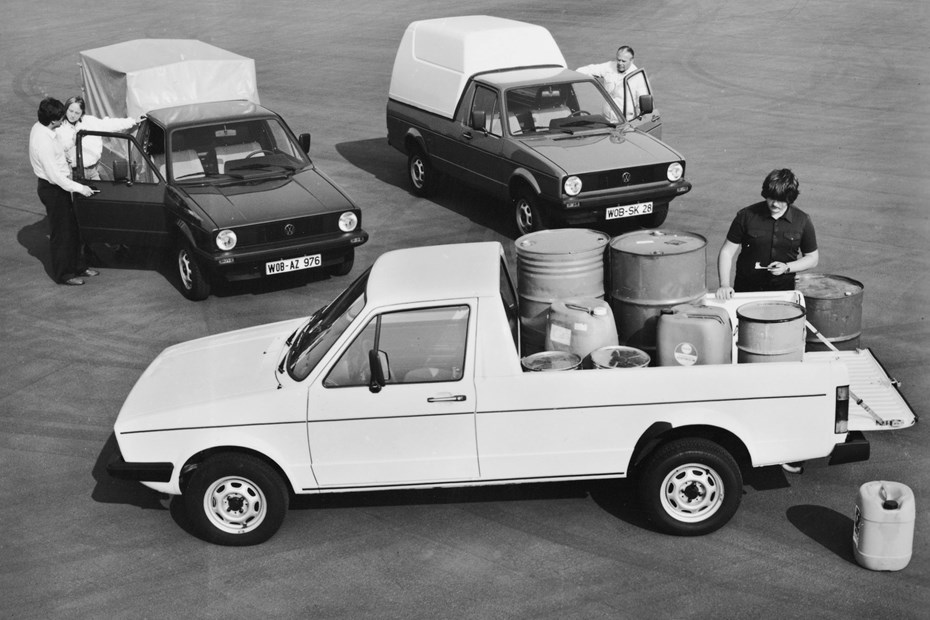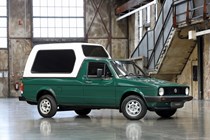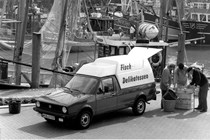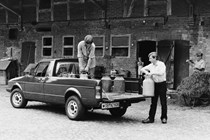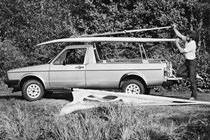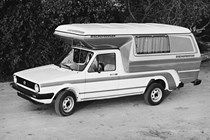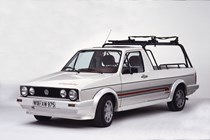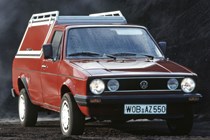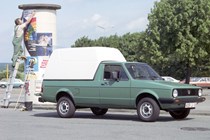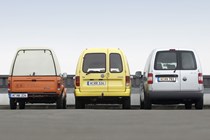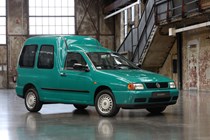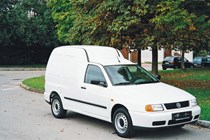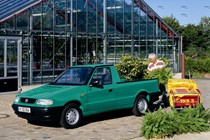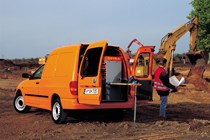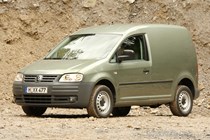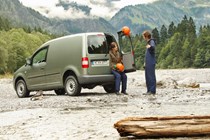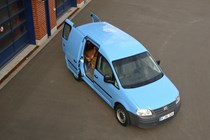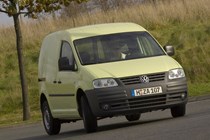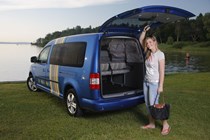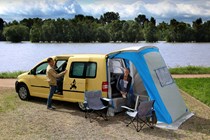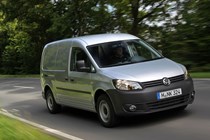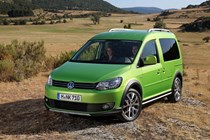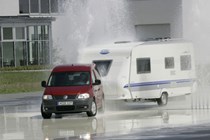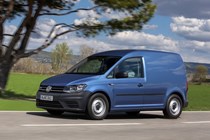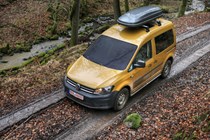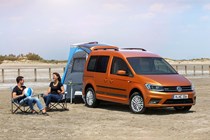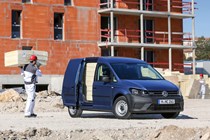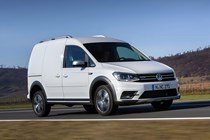Some say that 42 is the meaning of life – we say 2020 is two years later than the Volkswagen Caddy’s 40th anniversary, which means no snappy headline for this article like there is for the 70 years of the VW Transporter one.
On the other hand, the imminent arrival of the brand new, fifth-generation VW Caddy is an excuse for a nice bit of light reading amidst all this pandemic heartbreak. And some truly excellent archive photographs – which you can see more of in the gallery above.
So join us as we recount the history of this important small van trend-setter – beginning with the fact that it actually started out as a pickup.
>> Want van news delivered to your inbox? Sign up for the free Parkers Vans and Pickups newsletter
How many Volkswagen Caddys have been sold?
The Caddy dates back to 1978, when it began life in Pittsburgh, USA – rather than somewhere in Germany, as you might expect.

Since then, there have been four generations and over three million examples sold, with 200,000 finding homes in the UK.
The Caddy 5 has now been officially unveiled, but isn’t set to go on sale until late 2020 – you’ll find some more details of this at the bottom of the page.
Let’s crack on.
Volkswagen Caddy 1: 1978-1992
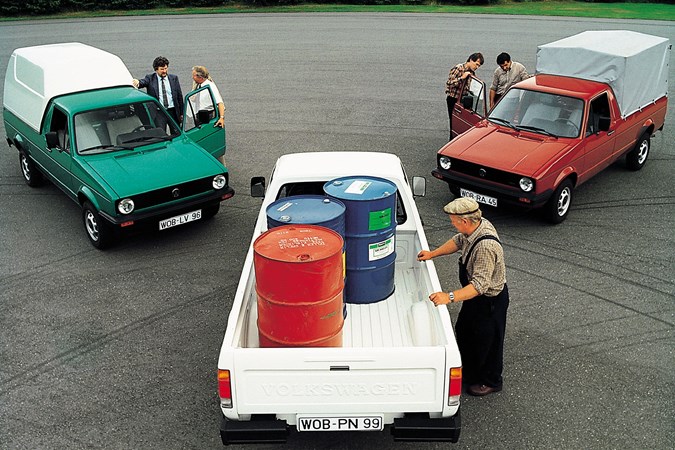
The original Caddy wasn’t a van at all – and it wasn’t originally called the Caddy, either. Rather, it began life as a pickup called the Rabbit, with production starting in Pittsburgh, Pennsylvania in 1978. This makes sense, if you think about it, as the American car market has always been dominated by pickups – albeit usually much larger ones than this.
The concept then made it over to Europe in 1982, when production started in Sarajevo and the Caddy nameplate was first applied.
Based on the Mk1 VW Golf, the Caddy 1 has a loadbay 1.83m long, giving it good versatility for its size. Period options included a tall fibreglass hardtop that turned it into a small van. There were camper-back conversion add-ons for the load area in the 1980s, too (see the gallery above for a picture).
While European production ended in 1992 – when the Bosnian war sadly broke out – this model remained in production in South Africa until 2007, giving it a total production run of 29 years. Worldwide sales added up to 207,000, with 6,730 sold in the UK.
Volkswagen Caddy 2: 1995-2003
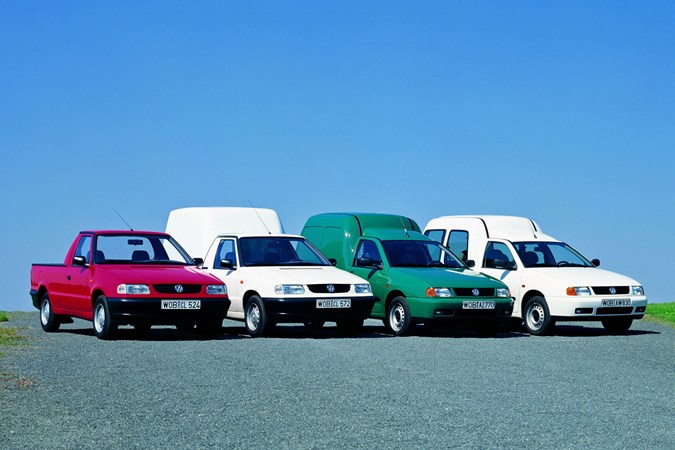
The second-generation Caddy also didn’t exactly start life as a regular Volkswagen – rather it was built as a variant of the SEAT Inca. The two little vans are identical aside from the badging and the front grille, and both were built in SEAT’s factory in Martorell, Spain.
The success of the previous Caddy pickup hardtop ensured the conversion to panel van, which came with a set of asymmetrical rear doors, a 2.9 cubic metre load area and up to 550kg of payload capacity. There was a high-roof ‘estate’ version, too. Compared with rivals of the time, it was a tough little truck.
Speaking of trucks, a Caddy pickup reappeared in 1996, built in the Czech Republic, and also sold as a Skoda Felicia. What’s more, the 1995 Vantasy concept vehicle previewed a proper Caddy camper, while in 1997 the Caddy Family launched as the first generation of a Caddy MPV (nowadays known as the Caddy Life).
Available with VW’s 1.9-litre TDI engine by the time it ceased production, in total the Caddy 2 found 520,000 buyers worldwide – though that’s including the Seat and Skoda versions. The UK accounted for 26,089 of them.
Volkswagen Caddy 3: 2003-2014
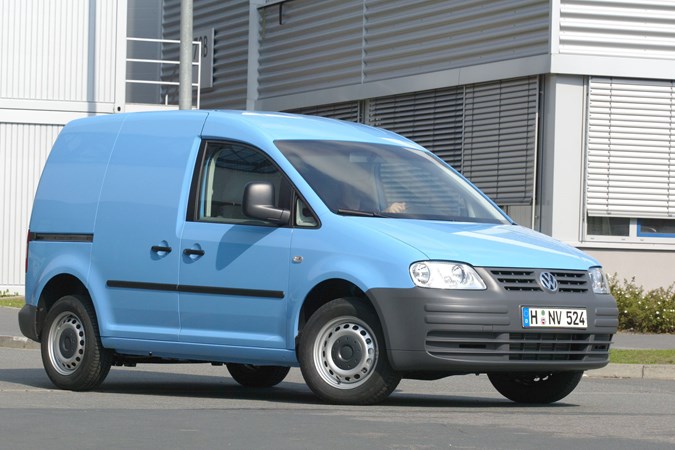
The third-generation Caddy was the first brought to life in the manner of a conventional Volkswagen, and the first manufactured at the van’s current home – VW’s Poznan factory in Poland, a facility that’s been dedicated to the Caddy ever since.
All-new versus the previous model, it was based on a modified version of the Mk5 Golf platform (the main difference being the tougher, simpler van-style rear suspension). Payload went up to as much as 800kg, while the standard load space grew to 3.2 cubic metres.
This was the first Caddy available as a long-wheelbase Maxi – introduced in 2007, this expanded the load space to 4.2 cubic metres, boosting practicality further. Meanwhile the Caddy Tramper in 2005 was the first official camper variant (see the gallery, above), and there was a seven-seater MPV, too.
A substantial facelift in 2010 introduced standard-fit electronic stability control, while the optional 4Motion four-wheel drive was a class first, leading to the 2013-onwards Cross Caddy lifestyle variant (also in the gallery). In 11 years, 1.6 million examples of the Caddy 3 were built, with 110,836 of those heading to the UK.
Volkswagen Caddy 4: 2015-2020
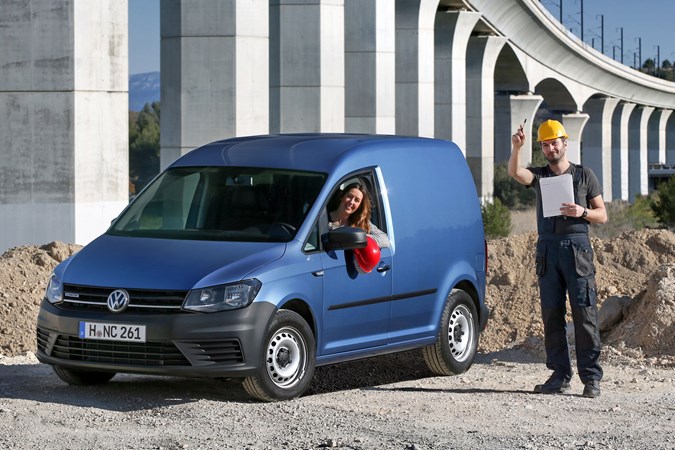
Though VW refers to this as the fourth-generation Caddy, if we’re brutally honest it’s really just a particularly heavy facelift of the previous version. Why mess with a strong formula – and besides, that didn’t stop Volkswagen improving the safety levels and the fuel efficiency.
This model certainly doesn’t lack for versatility, with two, five and seven seats available, a choice of two body lengths – standard and Maxi – and the option of the Caddy Beach camper in some markets, too. Then there was the Caddy Alltrack, successor to the Cross Caddy and sadly never sold in the UK.
Safety innovations include autonomous emergency braking – which became standard in mid-2017 – adaptive cruise control, and a driver alert system that does it’s best to spot if the person behind the wheel is falling asleep. Some of this stuff still isn’t common on many small vans even now.
In production until the Caddy 5 replaces it later in 2020, the Caddy 4 has already managed to smash out 722,000 examples in the five years its been on sale. In the UK we’ve bought 63,225 of them (at the time of writing), and it remains a popular choice of small van in spite of some much more modern opposition.
Volkswagen Caddy 5: 2020 onwards

An all-new Caddy from the ground up, the Caddy 5 is based on the VW Group’s multi-purpose MQB platform – the same as all the latest Golfs, severayl SUVs and even the Audi TT sports car – and promises to be powered by some of the cleanest diesel engines we’ve ever seen.
It also places a greater emphasis than ever on lifestyle buyers which perhaps explains why the Maxi’s load volume has dropped slightly to 4.0 cubic metres. Still, there’s a load through bulkhead and it will swallow two Euro pallets. Payload still lags behind the best in class, though.
Order books open in October 2020. With a load of tech upgrades – including the option of digital dials for the first time on some variants, and a clever Trailer Assist system – it should be one of the most sophisticated small vans on the market when it finally arrives in UK dealerships in early 2021.
There’s no talk of a full-electric version yet, but plug-in hybrid (PHEV) power has already been mentioned – though whether this will be offered on the Caddy Cargo van version as well as the Caddy Life people carriers remains to be seen. We can’t wait to drive it, which (coronavirus permitting) should happen around September 2020.
Volkswagen Caddy: the future
Looking a little further ahead, Volkswagen is taking the lead on small vans when it comes to the Ford-VW strategic alliance, which will jointly produce new light commercial vehicles, starting with the next Ranger/Amarok pickup that’s due to go on sale in 2022.
Does this mean the next Ford Transit Connect will be based on the VW Caddy 5? Neither side of the alliance is saying officially, but it seems unlikely VW would plan to build yet another small van just a few years after introducing this next one… Exciting times ahead.
Also read:
>> Volkswagan Caddy 4 review (2015-2020)
>> Volkswagen Caddy 5 (2020 onwards) full details
>> Find a Volkswagen Caddy for sale via Parkers
>> 70 years of the VW Transporter
>> Want van news delivered to your inbox? Sign up for the free Parkers Vans and Pickups newsletter
Just so you know, we may receive a commission or other compensation from the links on this website - read why you should trust us.


